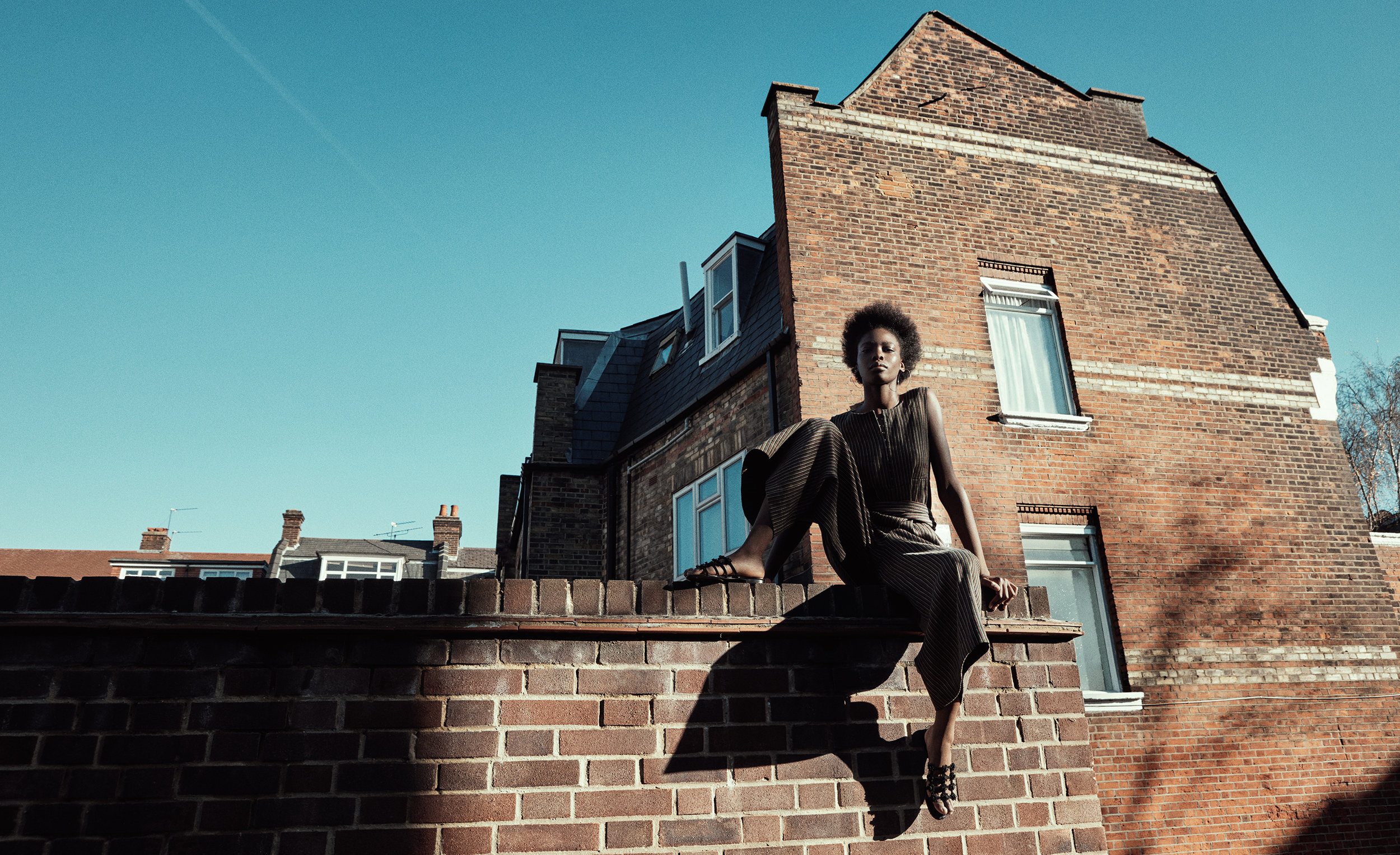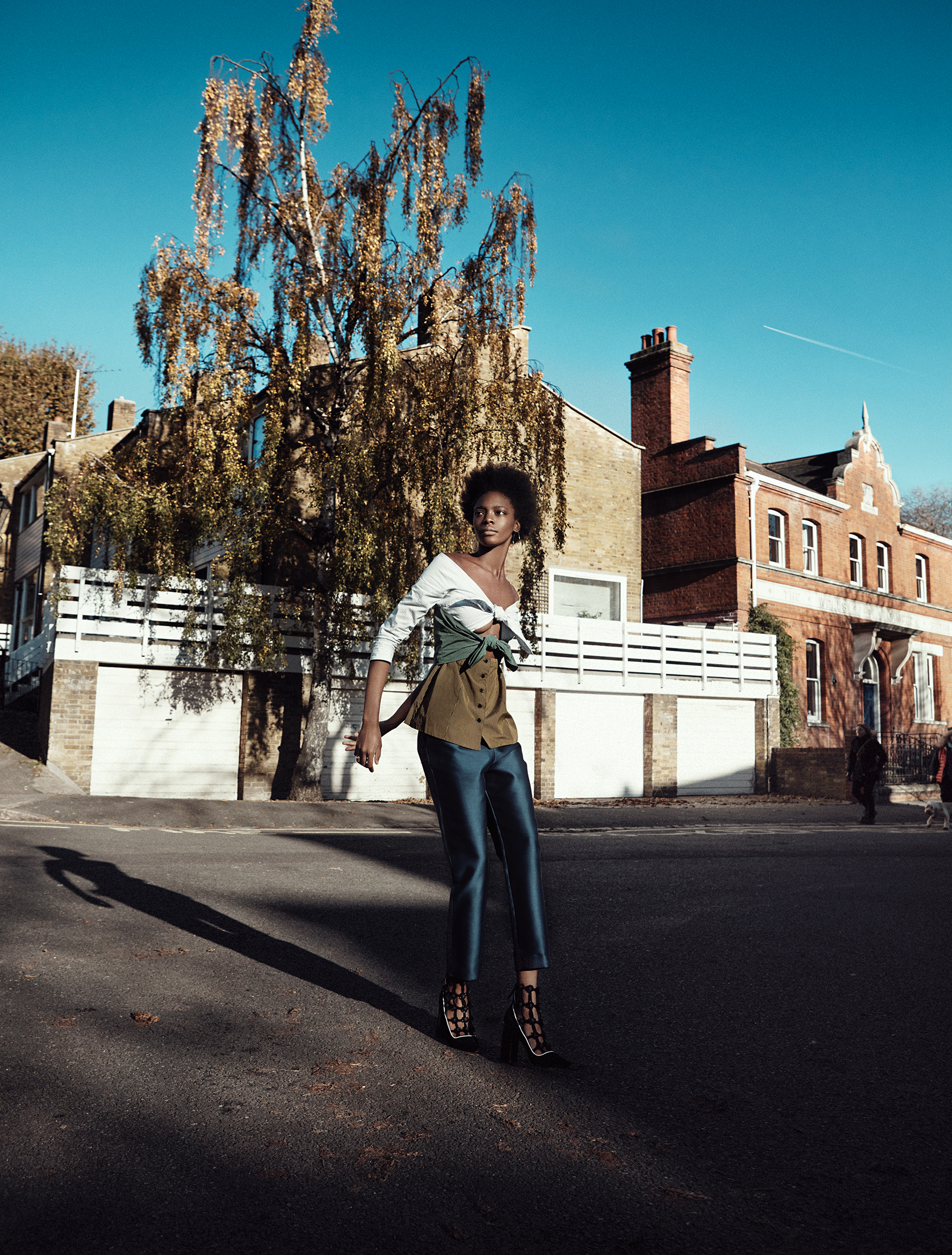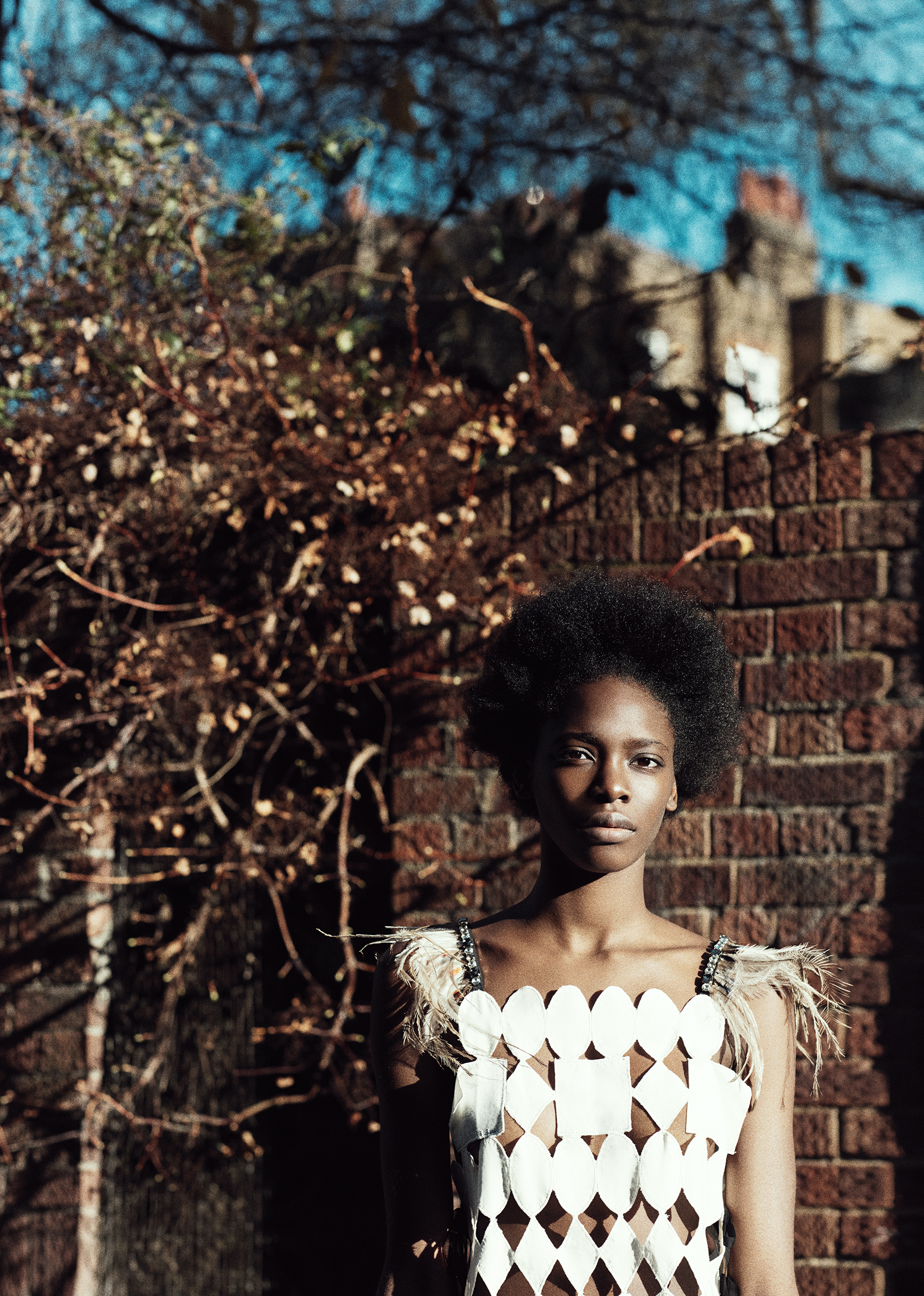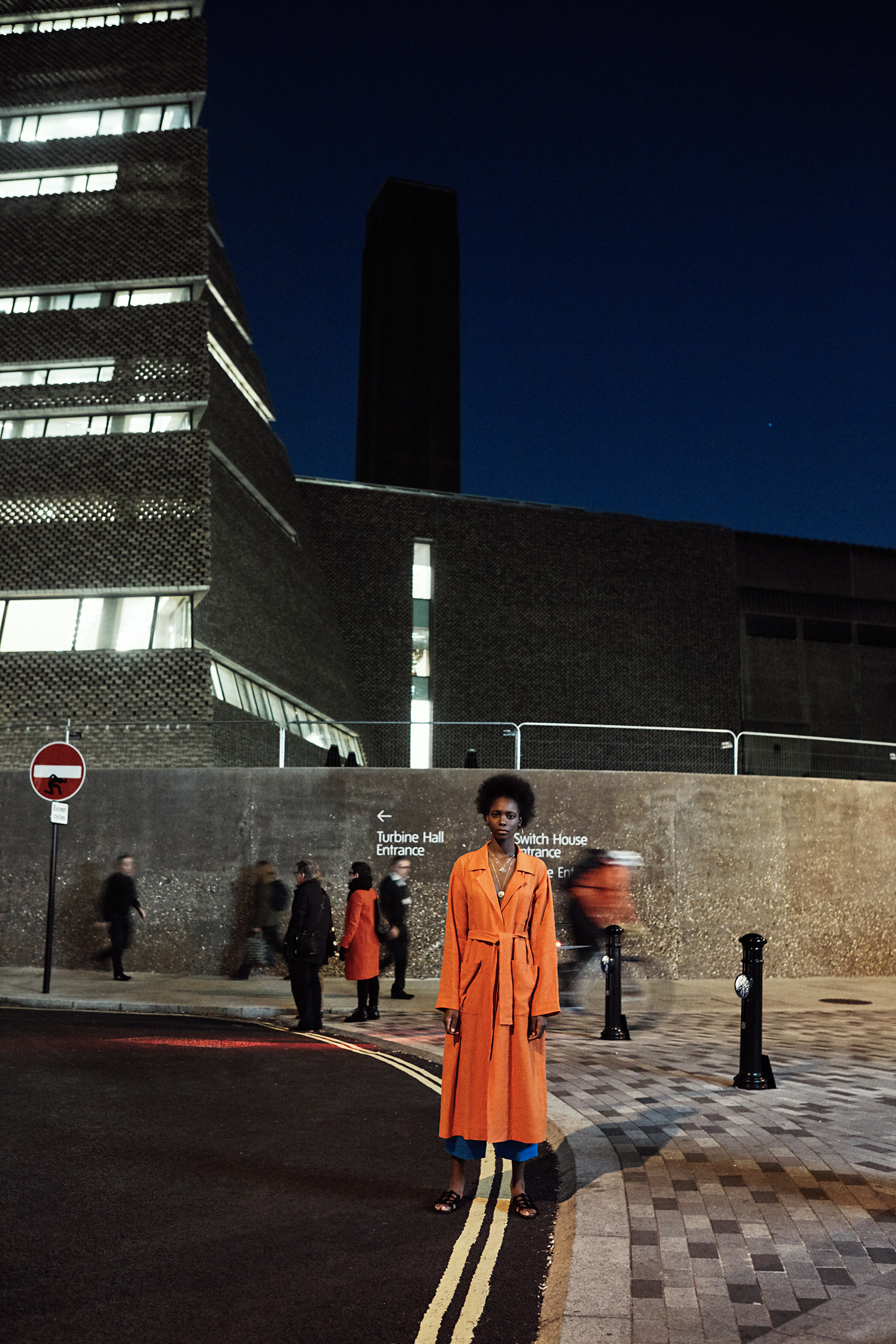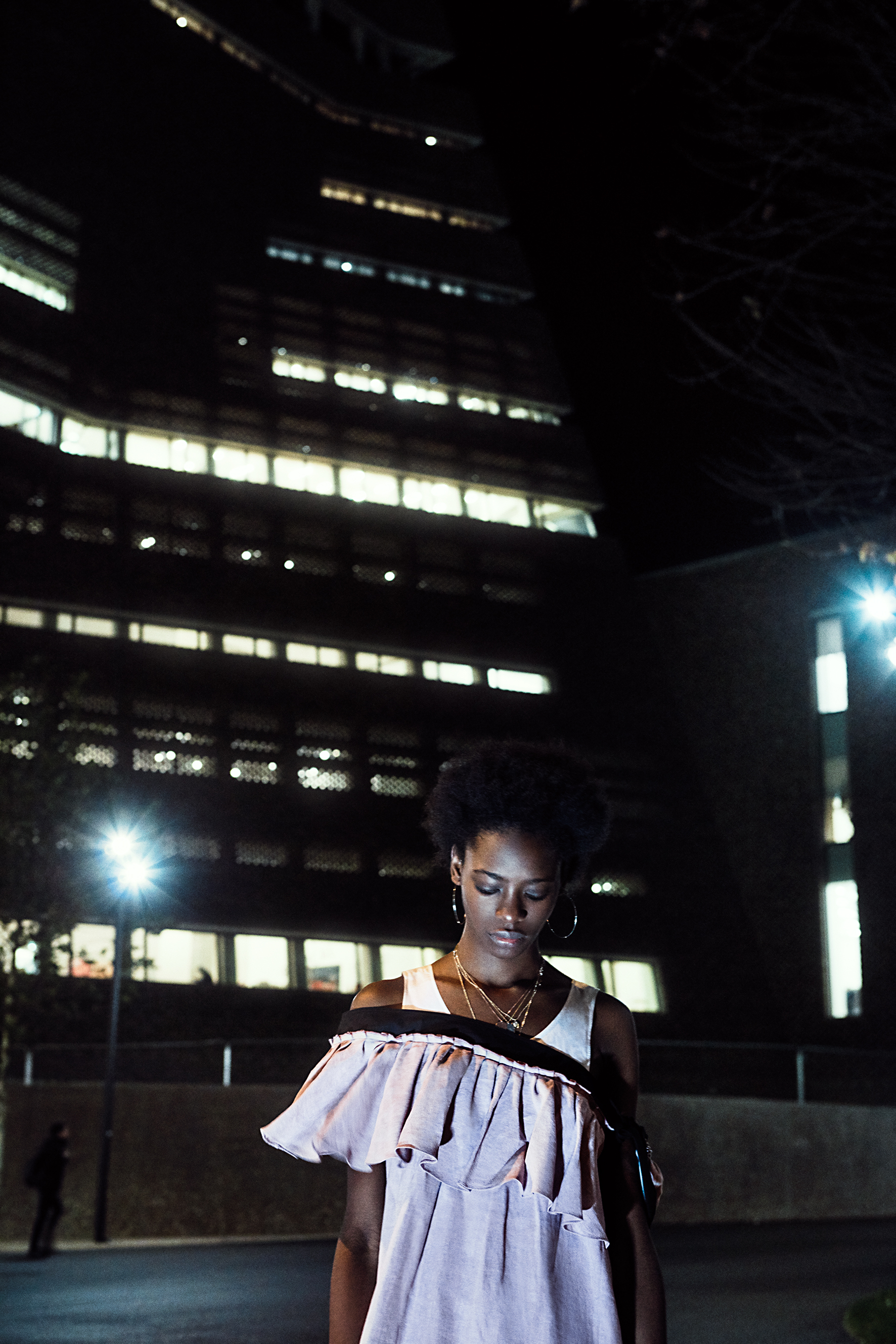LURVE ISSUE 11 - MIGRATING
ISA ARFEN
PHOTOGRAPHY BY FEDERICO DE ANGELIS
STYLING BY ALESSANDRA CONTI
INTERVIEW BY CARLOTTA BUOSI
Carlotta Buosi speaks to Serafina Sama
Fashion is all about balance for Serafina Sama, founder and Creative Director of womenswear label Isa Arfen. Particularly, the constant balancing act between simple and eccentric, experimentation and tradition, glamour and everyday life. The Italian-born, London-based designer – who started off with a small collection of summer dress, whose response gave her the courage to start an actual label – is up for a challenge. Positive attitude and a wide smile, she welcomed us in her studio in Ladbroke Grove, where she told us about her day dreams and about different times and spaces where she gets to escape, get inspired and come back, herbrain filled with new ideas. The same balancing act allows her to keep making conscious decisions about her business, reflected in the impeccable coherence of her collections and the clarity of the message she aims to put out the same message to which women from all around the world respond, very well. Trying to push herself out of her own comfort zone a little bit more, season after season, Serafina accepts the challenge of fashion and never passes on a chance to cross borders with it. Just as Serafina herself said: ‘at the end of the day, they are only clothes’.
Who is Isa Arfen and what’s the story behind her style?
I don’t have one specific woman in mind when I design, but my main concern since I started the label has been offering something for a real woman. It’s important for me that these clothes apply to a realistic kind of life and be- come pieces that any woman – regardless of age, shape or personal style – finds attractive. I hope to create pieces that have the potential to become someone’s favourites, that’s why in every collection there are some iconic pieces – such as the classic high wasted and very flattering trousers, a classic trench, lots of buttoned down shirts – something that you rely on over and over again.
Who’s the woman you’re thinking of when designing?
I think the woman who’d fit the Isa Arfen aesthetic the most is feminine, sophisticated but with a relaxed attitude, a sense of humour and touch of eccentricity.
That’s actually the feeling I have when looking at your collections. I also find them very glamorous, but not in a literal way...
Yes, there’s always a lot of glamour in my research, but I like to look at it with a bit of irony. I do love eccentricity and I think it’s important for someone to be able to have fun with what they are wearing. At the end of the day, it’s just clothes, so if they can put a smile on your face, even better! Still, it’s important for the same clothes to also work in an every-day life context. I’m not interested in making pieces which might look great in one picture but then feel restrictive or uncomfortable. I’m hoping that a woman wearing my design would feel like herself or even a better version of herself, being able to move, have fun and live her life.
You started off with a small selection of summer dresses and your label has evolved significantly in the course of the last few years. Has your approach to your work changed in any way too?
The aesthetic has stayed the same, just as the way in which I work and design. What has changed is that I no longer have the luxury of being impulsive and I need to be more careful about the choices I make. The brand is also a business now and it needs to sustain itself, so even tough I still work in quite an instinctive way– I listen a lot to what my guts tell me – I also need to question myself a lot more than I did at the very beginning, to make sure that the collection is cohesive and marketable. When I think back at some of my early collections and how exaggerated they were in many aspects, I realise how much I’ve come to know the im- portance of editing and trying to communicate a more concise message, which should make it easier for buyers and for the actual customers to understand what Isa Arfen is a ll about.
On that note, do you ever think of the business aspect as a border for you – in the sense of a limitation – or do you perceive it more as an organic transition into a new and more mature phase of your label?
Well, there definitely are times when I feel lim- ited. I might fall in love with a very expensive fabric, but then I must be realistic: I am not an artist and I want for people buy and wear my clothes, so I need to give these kind of healthy limitations to myself and see them as a challenge to which I need to find solutions. I think it’s not always bad to have limitations, that might push you to think and come up with different ideas. If you had all the freedom in the world, it could make you spoiled.
You said before that fashion for you is all about desire and fun, but also real life. How do you manage to combine the glamour you mentioned you love and wearability in your design?
I play a lot with the shape garment and the fabric I choose for it. For example, in many of my collections, if there’s a piece which is particularly dramatic – maybe very ruffly or whose volume is quite exaggerated – rather than making it in a fabric that would accen- tuate that eccentricity even more I would instead make it in a very simple one. Viceversa, if a piece is very simple I would then experiment with fabrics and colours for it. I thin it’s always about balancing things. If the shape is dramatic the fabric should be more organic, drier, less fancy and viceversa.
Within the constant game of balancing all these elements – glamour and wearability, simplicity and eccentrics – would you say that there is one among them that is particularly important for you?
I don’t think so. I think what is really important for me is the connection between the two, the overall balance. In most of the looks that we create these two aspects are always combined and mixed together and that’s what very much defines the Isa Arfen aesthetic.
What represents for you the border between elegance and pretentiousness?
I think elegance means feeling yourself. Something very simple could look elegant on someone, while a very done up look could be totally natural on someone else, if it feels natural for the person to wear it. When a woman tries to force herself and pretends to be someone else, then is not elegant anymore. The border gets crossed when you don’t feel comfortable: it needs to feel authentic in order to be elegant.
Fashion constantly crosses borders of time and space – let’s think of the various ethnic influences and revivals that have inspired different designers through time. What are the borders that you’ve crossed, thanks to fashion?
Even tough I work from my studio in London and I don’t get to travel much for research, I feel like fashion makes me travel and cross lots of borders anyways. Whenever I do research for a new collection, I find myself going towards so many different directions, getting inspired by different people from different cultures and countries. I day dream a lot when I work, so I would say that most the borders I get to cross thanks to fashion are virtual ones, but I’ve definitely crossed many in the last few years.
What about the ones you’d like to cross?
I would love to reach more people, maybe meet more of my actual customers or create a product which would be more accessible. It’s fascinating to me the fact that, even tough we work from London – which can be a little isolating at times – the clothes we make get to travel and end up in different parts of the world, where completely different types of women are going to wear them. My work is very personal personal to me, but each one of my garments follow its own path and end up in the lives of completely different women who have completely different lifestyles in completely different parts of the world.
Borders can be perceived more as bridges – transitioning into something else – or breaking points that lead to a chance. Which one do you think represents your vision the most?
I think it’s more about connecting, bringing things together, building bridges and unifying rather than dividing.
How important is experimentation in fashion, in your opinion?
Fabric research is very important to me, but also figuring out which kids of fabrics will work for certain shapes. The actual making of the garment is a great chance to experiment and for me it’s crucial as most of the time everything starts with a fabric, then an idea that comes from it for the volume and finally from the sketch starts a long process when things can change and evolve a lot. An initial idea might turn into something completely different. If something really works, then I might embrace it, maybe build a story around it and make it one of those staple pieces which can be kept season after season.
Give us three words to describe your upcoming FW17 collection.
Masquerade. Exaggeration. Femininity.
model: Marie at IMG Models
make up: Giovanni Iovine using Clinique
hair: Valentino Perini using Bumble & Bumble fashion assistant: Amnah Hafez
All clothing by ISA ARFEN


